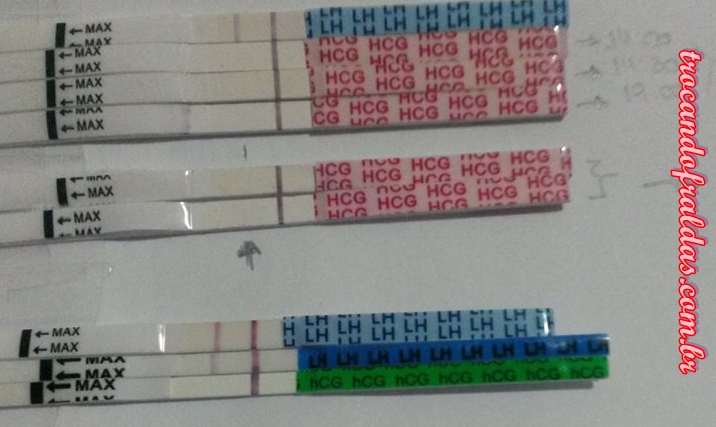Have you ever heard of the ovulation test? Seen as a helpful tool for women trying to get pregnant, the ovulation test was created to assist with conception1. Well known and widely used abroad, the ovulation test is here to revolutionize the way ovulation is detected!
The ovulation test is practically a craze among women trying to conceive in America. In the United States and other European countries, these tests are much more common, since they are as inexpensive and accessible as pharmacy pregnancy tests. They can provide certainty or a prediction of when a woman will be ovulating.
Best Way to Check for Ovulation
Of course, we all know that the best way to determine whether you are ovulating is by observing the cervical mucus. So, the more elastic the mucus, the more fertile the woman is2. However, not all women can identify ovulation mucus, and that’s where the ovulation test comes in to help detect this period.
So How Does the Ovulation Test Work?
The ovulation test works by detecting the LH surge in a woman’s urine. The test is used in the same way as a pregnancy test. The woman collects urine in a cup and dips the test up to the maximum mark, then reads the result after 5 minutes.
The best time to take the ovulation test is between 3:00 p.m. and 7:00 p.m., as this is when the LH surge is most intense. LH appears in the urine after the follicle matures and just before the egg is released. Normally, after a positive ovulation test, ovulation occurs within 12 to 48 hours, and the test line becomes darker than the control line, indicating ovulation is drawing near.
How to Interpret the Ovulation Test
However, unlike the pregnancy test, where any second line means a positive result, on the ovulation test both lines always appear, or at least almost always. So, what does a positive ovulation test look like? Both lines must be absolutely dark, or the test line must be darker than the control line.
Example of a positive ovulation test in the video below.
Some women have LH present throughout their whole cycle, just in lower amounts than during ovulation. That’s why faint lines should be disregarded. To know when to take the ovulation test, you must know your cycle and calculate when your most fertile day would likely be. Then, you can take the test 3 days before the expected ovulation date.
However, if you are irregular or don’t know your cycle very well, the best approach is to also use two other techniques that can really help: basal temperature and the Billings method. Used together, these three techniques can give you much more certainty about when you’ll ovulate.
For many women, the main issue is precisely this: knowing when to take the test. If you’re someone without a set cycle, remember that you can take the test according to your body’s signs, but you should start as soon as you suspect your fertile window is beginning. It’s also important to keep in mind that, even with regular cycles, a woman can sometimes have her fertile period at any time of her cycle. Watch for the signs carefully to start testing at the right time3.
Where to Buy Ovulation Tests in Brazil
Many women wonder where they can buy an ovulation test. Likewise, not all women trying to conceive know where to get them, or even want to but can’t find them at pharmacies. Some trusted sellers offer kits. As a reference, prices starting at R$3 per strip are often excellent, quality products.
Reader’s Testimonial
Reader Eliana, who has been trying to get pregnant for 6 months, recently started using the ovulation test and has liked the results. See her story below.
“I have always been irregular and, ever since I stopped taking birth control, my cycles have ranged from 34 to 38 days. I learned when to take the ovulation test and managed to detect ovulation in my very first cycle using this method. So, my fiancé and I had intercourse 24 to 48 hours after the positive result. I found it very useful and I will definitely continue to use it until I get pregnant, which I hope is soon!”
Anything that can help with getting pregnant is a great alternative; however, the most advisable way is really to take the test close to ovulation because otherwise, the test is useless for detecting ovulation.














